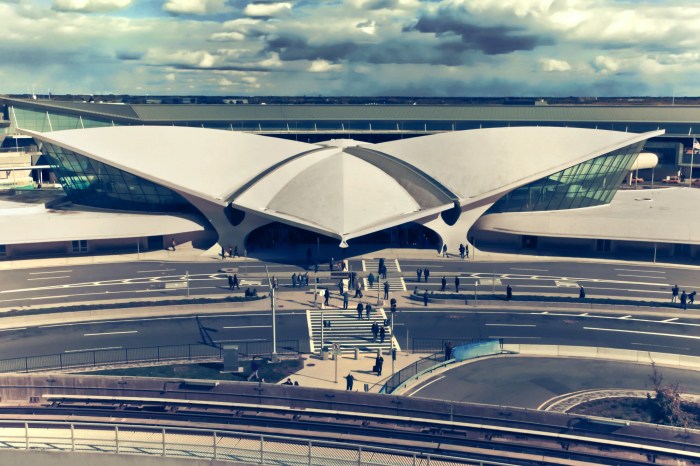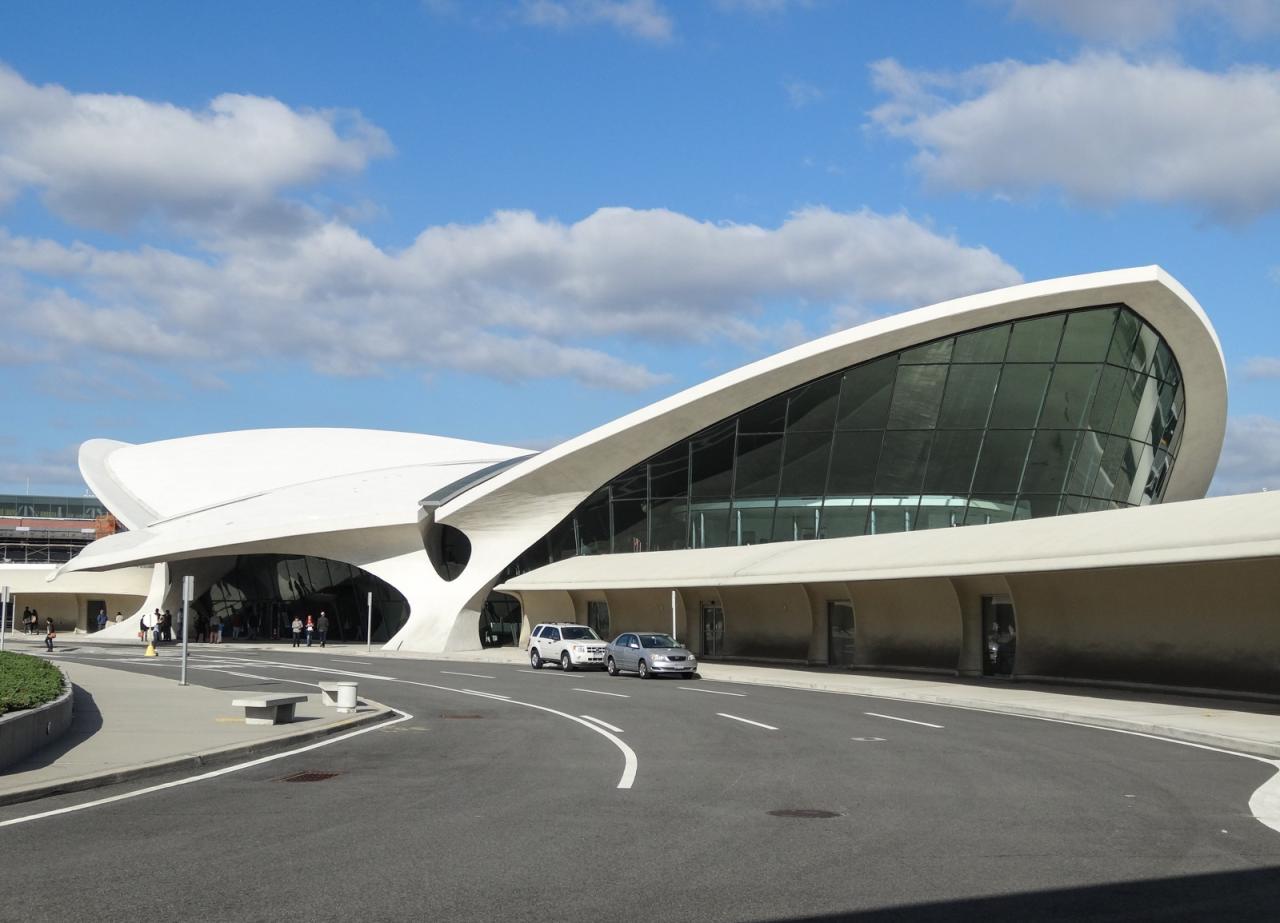Exploring the Architectural Brilliance of Eero Saarinen
Delve into the world of Eero Saarinen, a visionary architect whose innovative designs continue to shape modern architecture. This captivating introduction invites readers to uncover the life, works, and lasting impact of this influential figure.
From his early influences to his iconic buildings, this topic provides a comprehensive exploration of Eero Saarinen's architectural legacy.
Background of Eero Saarinen
Eero Saarinen, born in 1910 in Finland, was a renowned architect known for his innovative and futuristic designs. He moved to the United States with his family at a young age and studied architecture at Yale University, graduating in 1934.
Saarinen then went on to work with his father, Eliel Saarinen, a celebrated architect in his own right.
Architectural Influences and Style
Saarinen was heavily influenced by the modernist movement and sought to create buildings that were both functional and aesthetically pleasing. His style can be described as organic modernism, blending natural forms with modern materials. He was also inspired by the works of his contemporaries, such as Le Corbusier and Mies van der Rohe.
Most Famous Works and Their Significance
Saarinen's most famous works include the Gateway Arch in St. Louis, Missouri, and the TWA Flight Center at JFK Airport in New York. The Gateway Arch is a symbol of American expansion and the pioneering spirit, while the TWA Flight Center is a prime example of mid-century modern architecture.
Saarinen's designs continue to inspire architects and designers to this day, showcasing his lasting impact on the world of architecture.
Architectural Style and Innovations
Eero Saarinen was known for his unique design approach that blended innovation with functionality, creating iconic structures that stood out in the architectural world. His style was characterized by sleek lines, organic shapes, and a focus on the overall experience of the space.
Design Approach
Saarinen's design approach often involved creating buildings that harmonized with their surroundings, whether natural or urban. He believed in creating spaces that were not only visually appealing but also practical in their use. One of his most famous works, the TWA Flight Center, showcases his ability to seamlessly integrate form and function.
Innovative Use of Materials
Saarinen was known for his innovative use of materials in architecture, pushing the boundaries of what was possible at the time. He experimented with new materials such as reinforced concrete, steel, and glass to create structures that were both structurally sound and visually striking.
The use of materials like concrete in the construction of the Gateway Arch in St. Louis demonstrated his forward-thinking approach to design.
Comparison with Other Architects
Compared to other prominent architects of his time, such as Frank Lloyd Wright and Le Corbusier, Saarinen's style was distinct in its focus on sculptural forms and clean lines. While Wright embraced organic architecture and horizontal lines, Saarinen leaned towards more futuristic and dynamic designs.
His work often featured sweeping curves and bold shapes that set him apart from his contemporaries.
Iconic Buildings by Eero Saarinen

Eero Saarinen's architectural legacy includes several iconic buildings that showcase his innovative design approach and structural creativity.
Gateway Arch in St. Louis
The Gateway Arch in St. Louis, Missouri, is one of Eero Saarinen's most famous works. The arch stands at 630 feet tall and serves as a symbol of westward expansion in the United States. Saarinen's design for the arch involved a unique stainless steel structure that required groundbreaking construction techniques.
The sleek, curved form of the arch represents a bold and futuristic vision, making it a standout landmark in American architecture.
TWA Flight Center at JFK Airport
The TWA Flight Center at John F. Kennedy International Airport in New York is another notable creation by Eero Saarinen. This building, with its distinctive wing-shaped roof and futuristic design, revolutionized airport architecture. The TWA Flight Center was ahead of its time in terms of both aesthetics and functionality, setting a new standard for airport terminals around the world.
The building's innovative design continues to influence architects and designers to this day.
Miller House in Columbus, Indiana
The Miller House in Columbus, Indiana, is a prime example of Eero Saarinen's residential architecture. This modernist masterpiece features a flat roof, floor-to-ceiling windows, and a seamless integration with the surrounding landscape. Saarinen's design for the Miller House focused on creating a harmonious relationship between the indoor and outdoor spaces, emphasizing openness and natural light.
The Miller House stands as a testament to Saarinen's ability to blend form and function seamlessly in his architectural creations.
Legacy of Eero Saarinen

Eero Saarinen's impact on modern architecture is profound and enduring. His innovative designs have left a lasting influence on the architectural world, inspiring future generations of architects and shaping the way we think about the built environment.One of the key aspects of Saarinen's legacy is his ability to seamlessly blend form and function in his designs.
His buildings not only look striking but also serve their intended purposes efficiently. This emphasis on both aesthetics and practicality has influenced countless architects who strive to achieve a similar balance in their work.
Influence on Modern Architecture
Saarinen's use of bold, sculptural forms and innovative construction techniques has set a standard for modern architecture. His iconic buildings, such as the TWA Flight Center at JFK Airport and the Gateway Arch in St. Louis, continue to captivate and inspire architects around the world.
The clean lines, sweeping curves, and use of new materials in his designs have become synonymous with mid-century modern architecture.
Inspiration for Future Generations
The daring vision and creativity exhibited in Saarinen's work have served as a beacon for aspiring architects. His willingness to push boundaries and challenge conventions has encouraged architects to think outside the box and explore new possibilities in design. By daring to dream big, Saarinen has shown that innovation knows no bounds.
Preservation Efforts
In recognition of the importance of Saarinen's architectural legacy, efforts have been made to preserve his buildings for future generations to appreciate. Organizations dedicated to architectural conservation work tirelessly to maintain and restore Saarinen's structures, ensuring that his innovative designs continue to be celebrated and enjoyed for years to come.
Closing Summary
In conclusion, Eero Saarinen's groundbreaking designs have left an indelible mark on the architectural landscape. His innovative spirit and iconic structures continue to inspire and captivate architects and enthusiasts alike, ensuring his legacy endures for generations to come.
Quick FAQs
What were some of Eero Saarinen's architectural influences?
Eero Saarinen drew inspiration from a variety of sources, including his father Eliel Saarinen and the Finnish architectural tradition.
What makes Eero Saarinen's design approach unique?
Eero Saarinen's design approach was characterized by a blend of modernist principles and innovative use of materials, creating striking and unconventional structures.
Which of Eero Saarinen's works are considered his most famous?
Some of Eero Saarinen's most famous works include the Gateway Arch in St. Louis, the TWA Flight Center at JFK Airport, and the Miller House in Columbus, Indiana.




